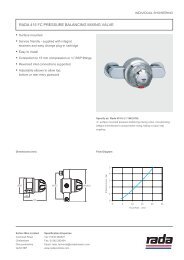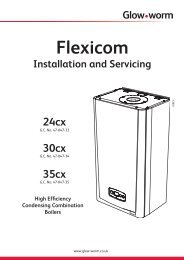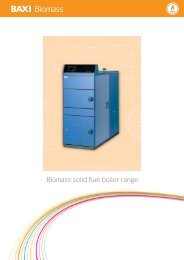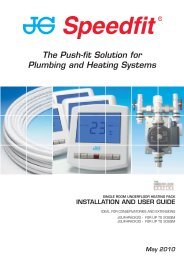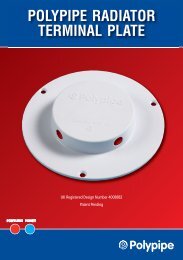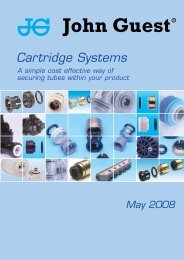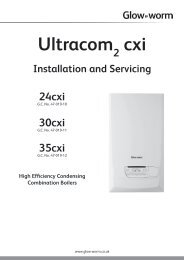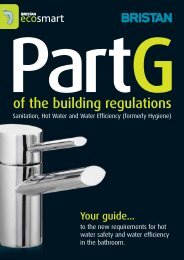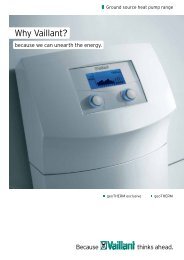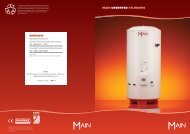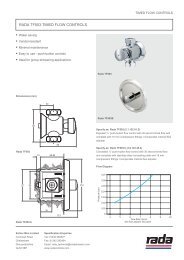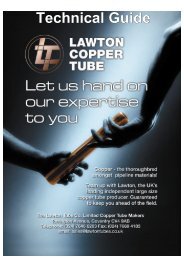Hep20 Technical Handbook
Hep20 Technical Handbook
Hep20 Technical Handbook
You also want an ePaper? Increase the reach of your titles
YUMPU automatically turns print PDFs into web optimized ePapers that Google loves.
Use of Corrosion Inhibitors<br />
Corrosion of metals is a hazard in<br />
all installations therefore it is<br />
essential that possible causes of<br />
corrosion are kept to an absolute<br />
minimum.<br />
Oxygen will almost always be<br />
present in any system as it can<br />
enter through a variety of points<br />
such as open header tanks, threaded<br />
joints, valves, pumps and above the<br />
bleed point on a radiator.<br />
To provide maximum system<br />
protection independent of pipe<br />
material, all heating circuits should<br />
be protected by an inhibitor.<br />
Hep 2 O ® Barrier Pipe incorporates an<br />
additional oxygen barrier to reduce<br />
ingress of oxygen through the pipe<br />
wall.<br />
Fernox MB1 and GE Betz Sentinel<br />
Inhibitors have been tested and<br />
are suitable for use with Hep 2 O ® .<br />
Handling and Storage<br />
Hep 2 O ® is an extremely tough and<br />
durable system. However, as with<br />
all materials some care is required<br />
to ensure damage is not incurred<br />
during storage or installation which<br />
may impair its ultimate performance.<br />
Straight lengths of Hep 2 O ® pipes<br />
may be laid flat or stacked vertically.<br />
Coils may be laid on their side or<br />
edge. Both are lightweight and easy<br />
to carry and handle.<br />
Pipe and fittings wherever possible<br />
should be stored in their original<br />
packaging until ready for use. This<br />
ensures protection from ultra-violet<br />
light and will reduce the risk of<br />
contamination.<br />
Spare grab wedges and ‘O’ rings<br />
should not be carried loose<br />
amongst other fittings or tools<br />
where they may be damaged. They<br />
should be kept in their original<br />
packaging or in a separate container<br />
which will protect them.<br />
Hep 2 O ® should be protected from<br />
contact with petroleum and oil<br />
derivatives, fluxes and other agents<br />
that may damage fittings or<br />
components.<br />
When carrying or installing<br />
Hep 2 O ® pipe, care should be taken<br />
to avoid dragging the pipe along the<br />
ground or damaging the pipe on<br />
other surfaces such as walls.<br />
When feeding pipe through holes in<br />
walls and brickwork the pipe end<br />
should be taped over, or<br />
alternatively, the red end cap<br />
included in the pipe coil should be<br />
used to prevent damage to the<br />
jointing surface and debris entering<br />
the pipe.<br />
Care should be taken to avoid<br />
kinking the pipe during installation.<br />
Hep 2 O ® Straight Coiled pipe is easy to<br />
carry and handle<br />
Fed pipe with end cap protection<br />
Hep 2 O ® Straight Coiled pipe compared<br />
to standard plastic coiled pipe<br />
83



